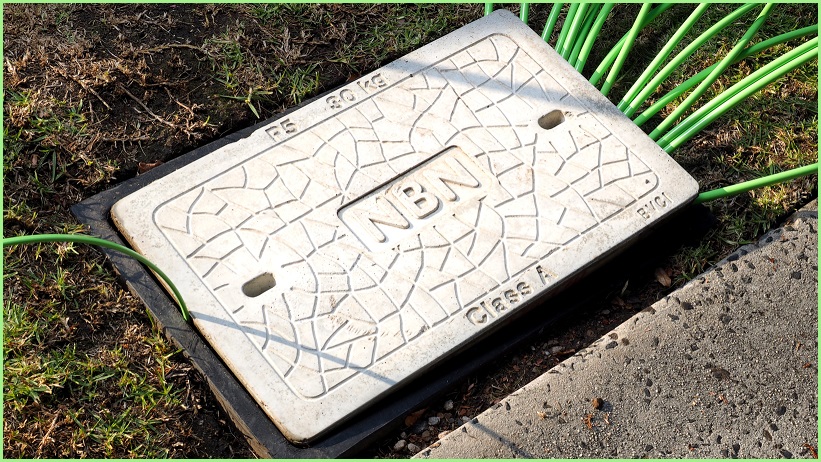They expect over eight million premises to have access to NBN speeds of 500MBps or faster by the end of 2023, but NBN Co executives have glossed over the fact that most are in regional areas – including numerous Labor-held seats the Morrison government must swing to win the May election.
NBN Co’s announcement this month added an additional 90,000 premises to the list of areas where residents can request their fibre-to-the-node (FTTN) services be upgraded to fibre-to-the-premises (FTTP) – which will allow them to access broadband plans offering 100Mbps, 250Mbps, or up to 1Gbps.
An additional 230,000 FTTN customers are expected to be eligible to upgrade by 30 June this year, with another 600,000 premises expected to be online by the end of this year.
“After rolling out the network at pace,” said NBN Co chief operating officer Kathrine Dyer, “we are turning our attention and investment towards improving access to fibre upgrades on FTTN and fibre-to-the-curb (FTTC).”
“We are on track to achieve our goal of enabling around eight million premises to access NBN’s highest speed tiers by the end of 2023.”
Dyer and NBN Co did not mention the fact that all of the 46 towns on the list are in regional areas, which is unusual given the company’s history of promoting regional investments when it makes them.
The recent announcement of a co-funded rollout in 50 regional Victorian towns, for example, mentioned its focus on regional Victoria – but the word was nowhere to be found in NBN’s latest rollout extension, which adds 46 towns scattered across the country.
Access to FTTP services will be welcome news for residents of areas such as Byron Bay, East Ballina, Kingscliff and Suffolk Park in the electorate of Richmond, where the Australian Labor Party holds sway by a margin of just 4.1 per cent.
Another marginal Labor seat, Shortland – held by a margin of just 4.4 percent, is also well represented with premises in Cardiff South, Charlestown, and Macquarie Hills all earmarked for FTTP upgrades.
Also among the newly announced suburbs are premises in areas like Wyong and Blue Haven – whose electorate of Dobell is currently in ALP hands by a razor-thin margin of just 1.5 per cent – and Queenscliff and Highton, whose electorate of Corangamite has a Labor majority of just 1.0 per cent.
The list also includes suburbs like Wodonga and West Wodonga, Victoria – whose electorate of Indi is held by independent Helen Haines by just 1.4 per cent.
There are few Liberal-held seats on the list, but those that were featured on the list are held by thin margins – Monash, for example, with a 6.9 per cent margin that was reduced during recent redistribution, and La Trobe, where the Liberal Party is vulnerable with a margin of just 5.5 per cent.
Mayo, in South Australia, also features on the list, with residents of Littlehampton and Nairne set to access superfast broadband – and the Liberals hoping for a swing away from incumbent Centre Alliance MP Rebekha Sharkie.
Only one suburb in a relatively safe Labor seat – Shellharbour, in Whitlam – is on the list, which also features a number of electorates safely held by the National Party.
Despite its focus on closely-held Labor seats in other states, the list’s Queensland suburbs are all in Liberal or Nationals-held seats including Capricornia, Dickson, Fisher, Groom, and Petrie – which has the slimmest margin, of just 4.6 per cent.
Reversing years of neglect
The announcement is a big win for regional areas, which struggled with archaic FTTN services during a pandemic where broadband services were pushed to their limits.
Urban and regional centres with faster broadband fared better overall, but rural MPs have been outspoken in their criticism of substandard regional broadband services.
A recently-announced $750m investment will extend NBN Co’s fixed wireless services into areas that were previously only serviced by ponderously slow satellite broadband, allowing NBN Co to reduce contention for satellite bandwidth in a defensive play against Elon Musk’s Starlink and similar competitors.
NBN Co has also been challenged by efforts such as GigCity, a South Australian project that is pushing gigabit-speed services to residents and businesses.
The new timeline for NBN Co’s fibre expansion brings NBN Co’s rollout broadly in line with the original timeline when the NBN was first proposed in 2009 – at which point the network was, an Abbott government review found, expected to deliver FTTP to nearly all Australian premises by 2024.










